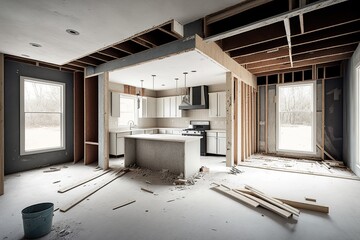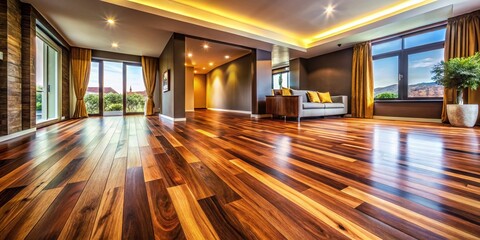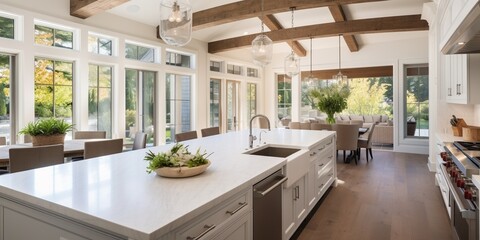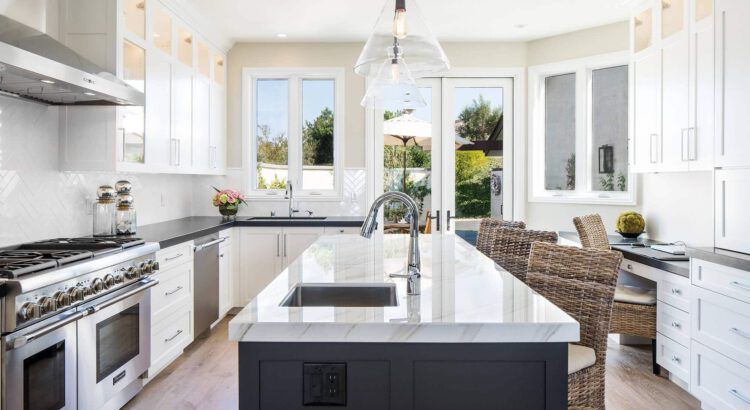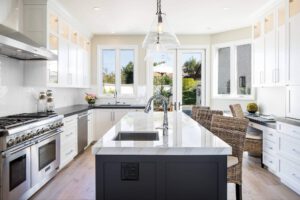Home improvement professionals face unique challenges when it comes to marketing their services. They need to deal with seasonal demand changes and make sure they stay top of mind for their local audience.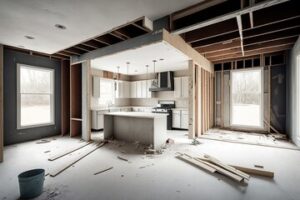
Using effective marketing strategies like showcasing before-and-after photos is a great way to build trust with potential customers. Also, including testimonials in your online marketing can help you gain more business. Keep reading the article below to learn more about Home Improvement Advertising.
Google Ads can help you reach potential customers at the right time. They allow you to bid on relevant keywords that will display your ads in the search results when people are looking for home improvement contractors in your area. The ads can also direct users to your website or mobile app. However, these ads can be expensive and require careful management.
To maximize the effectiveness of your Google ads, you need to understand your target audience. For example, if you want to target homeowners who are looking for bathroom remodelers, you need to know what their preferences are and what words they use when searching for these services. By doing this, you can target the right customers and increase your chances of getting leads and converting them into clients.
Another way to improve your Google ads is by focusing on your niche. This is important because it will allow you to stand out from the competition and attract the right customers. Homeowners who are interested in remodeling their kitchens, bathrooms, or bedrooms often turn to Google to find a contractor they can trust. In addition, by focusing on your niche, you can make sure that your ads are visible to people who are likely to hire you for the work they need done.
The best way to maximize your return on investment (ROI) with Google Ads is by tracking key performance indicators, including cost per click, click-through rate, and conversion rate. This will enable you to see which campaigns are working and which need to be improved or discontinued.
It’s also important to regularly check Google’s policies to ensure your advertising is in compliance. Violations can lead to account suspension, which will prevent your ads from appearing and may affect your business’s revenue. To avoid violations, make sure that all billing information is up to date and always have a backup payment option on file. It’s also a good idea to keep an eye on competitors’ advertising strategies, as they could be violating Google’s policies without even realizing it.
The top three Google search results receive 41% of all clicks, so if you’re a home improvement contractor, it’s crucial to be seen in these spots. To do so, optimize your Google Business Profile with accurate information and services, claim listings on Yelp and Angi, and encourage reviews.
Social media
Homeowners are turning to home improvement experts for advice and guidance as they invest in their properties. But standing out among the competition isn’t easy. Home renovation companies need to be creative and innovative when marketing their services. They should also stay ahead of the curve by leveraging digital marketing strategies to meet the demands of today’s customers.
Social media can be a powerful tool for home improvement marketing, but it’s important to know when to post. Posting at the right times can increase engagement rates, which can ultimately lead to more visibility for your content. By utilizing tools like Google Analytics, you can identify the best times to post and share your content with your target audience.
Facebook and Instagram are a great way to showcase your work, share before-and-after photos, and connect with potential clients. Using Facebook’s detailed targeting feature, you can reach homeowners who are looking for home upgrade services in your area. This will help you avoid wasting money on advertising to people who aren’t interested in your services.
A well-maintained Houzz profile can be a powerful tool for home remodeling professionals. Using the platform to post high-quality images, detailed service descriptions, and positive customer reviews can build trust and credibility. This will make your business stand out in a competitive market.
Having an active social media presence can also help you improve your search engine optimization. Having relevant keywords in your posts and title tags can boost your website’s ranking on search engines. This will help you get more traffic and convert potential leads into paying customers.
Online shopping has revolutionized the home improvement industry. Consumers are becoming more strategic about how they spend their budgets, balancing DIY and professional services, and shifting between private labels and brand loyalty. This shift has created huge growth opportunities for retailers and manufacturers, but it’s also put pressure on contractors to adapt their services and marketing strategies.
Homeowners are constantly searching for new ideas to update their homes. It’s crucial that home improvement marketers use a mix of online and traditional marketing channels to keep their businesses top of mind for homeowners, maintain a steady stream of customers, and retain full crews.
Email marketing
Home improvement projects can be expensive, so it’s important to focus your marketing efforts on the digital channels that deliver real results. From SEO to social media, these channels can help you attract new customers and grow your business.
Email is a great way to connect with potential clients and promote your services. It can also help build trust and establish your credibility as a trusted partner. To maximize the benefits of your email marketing campaign, create engaging and informative content that showcases your work. This will increase your chances of gaining a customer’s trust and converting them into sales.
Creating a solid email marketing strategy is key to growing your home improvement business. You can target potential customers by using a targeted list of keywords and demographics. Unlike other forms of advertising, pay-per-click ads are highly effective and provide instant visibility and traffic. This makes them a valuable tool for home improvement professionals, as they can control the amount of money they spend on each campaign and ensure that their ads are seen by the right people.
Local SEO is another important tool for home improvement businesses. By optimizing your Google My Business listing, claiming listings on Yelp and Angi, and encouraging reviews, you can improve your search engine ranking. In addition, you can use targeted Facebook ads to reach home improvement customers in your area.
Homeowners are focusing on their homes during the COVID-19 pandemic, which means that they’re eager to finish remodeling and renovation projects. Home improvement contractors can take advantage of this trend by advertising their services to homeowners who need to repair or replace their windows, doors, and roofs. By targeting potential clients on their social media channels, home improvement contractors can reach a wide audience and boost their conversion rates.
Homeowners are more interested in hiring a contractor with good online reviews than ever before. To maximize the impact of your online marketing, you should focus on generating positive reviews and addressing negative ones as soon as possible. This will show that you care about your customers and are willing to address any complaints.
Print advertising
Despite the rise of digital marketing, print advertising is still a powerful tool that offers home improvement businesses a unique way to connect with consumers. By incorporating the right visuals and language, it can establish brand trust and create lasting impressions. It also helps home service businesses target specific demographics and reach their audience effectively.
One of the most effective ways to use print advertising is through direct mail campaigns, which can be customized to meet the needs of your business. This type of marketing is ideal for promoting special offers, up-selling, and showing appreciation to existing customers. It can also be used for a variety of other purposes, including educating consumers about your company’s products and services.
Another type of print advertising is through local advertising, which can be targeted to your local market and reaches a broad range of potential customers. This type of marketing can be particularly effective for home renovation and design services, as it allows you to reach a very specific audience. You can also utilize radio and television to reach your target market, which can be a cost-effective option for small businesses with limited budgets.
Consistent local advertising is an effective strategy to build your brand reputation and make your business the first choice for home improvement services. For example, a landscaper or roofing contractor can run monthly ads in a local magazine to maintain a steady presence in the community. This will ensure that your brand is top of mind for residents and increase traffic to your website. Additionally, you can use social media to promote your ads and gain more attention from potential customers.
